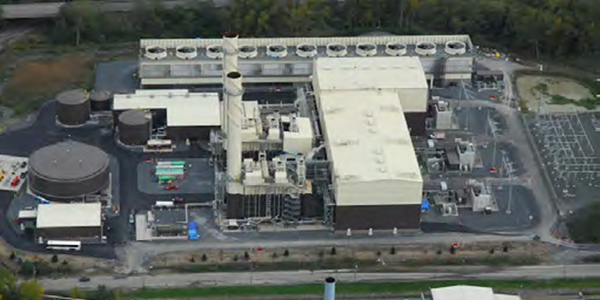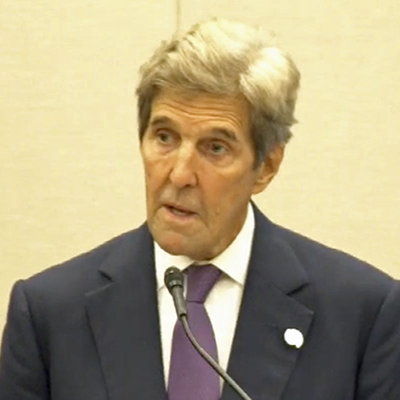New Jersey’s Board of Public Utilities (BPU) is seeking stakeholder input to help craft the state’s third offshore wind solicitation, for 1.2 GW, in the first quarter of 2023, as it reaches for its goal of 11 GW of wind power by 2040.
The agency is asking stakeholders for insight into more than 40 questions for which the answers will help the state shape the Solicitation Guidance Document on issues such as project design requirements, the economic impact of the winning project and different aspects of the environmental and fisheries mitigation plans.
The questions include: whether the BPU should seek only projects of 1.2 GW or offer flexibility to diverge from that; whether the board should accept storage proposals as part of the solicitation; what strategy might ensure that the economic benefits pledged in a proposal are met; and how to ensure the full project pitched is constructed.
The board’s solicitation on Sept. 16 preceded a flurry of announcements by the Murphy administration to mark Climate Week, including plans to spend $10 million on green job creation and $3.125 million on researching the impact of the wind projects on marine wildlife.
The request for information is the first of two, according to the BPU. The second will be released after the board makes its decision on its transmission solicitation made under the State Agreement Approach (SAA) with PJM. The board received about 80 suggestions for how enhance the state grid in preparation for the increase in offshore wind power and expects to make a decision in October on which ones, if any, to adopt. (See NJ Seeks Efficiency, Savings in OSW Transmission Process.)
With that completed, the board expects to issue a draft of the third solicitation incorporating stakeholder comments in November.
Extreme Events
The solicitation, following the BPU’s award of 3.758 GW of power in solicitations in 2019 and 2021, will be the next step toward the 11-GW goal set out in an executive order signed by Gov. Phil Murphy on Sept. 21. The new goal is nearly 50% higher than the previous goal of 7.5 GW by 2035, which Murphy rescinded in the order, and the state has not yet set its final goal. The order added that “the BPU shall undertake to study the feasibility and benefits of further increasing the goal.”
“Extreme weather events and severe flooding across the country leave no room for doubt: The effects of climate change are becoming more impactful and more aggressive, and we must do the same,” Murphy said in a release announcing the signing of the executive order. In a speech at Climate Week in New York City the same day, Murphy called it an “aggressive target, but an achievable one,” adding that the task will be assisted by “technological advancements that are making turbines more and more efficient, almost literally by the day.”
The shift elevates New Jersey’s goal above that of New York’s OSW target of 9 GW by 2035. Both states will also see additional OSW power created from the federal auction in which six bidders pledged to create projects totaling 5.6 GW in the New York Bight, the coastal zone that straddles the two states. (See Fierce Bidding Pushes NY Bight Auction to $4.37 Billion.)
Yet the state’s expanding offshore wind strategy comes amid concern among Republicans and business groups at the potential — and so far, unknown — cost of shifting the state away from fossil fuels and toward electricity.
Readiness Questioned
A spokesman for Affordable Energy for New Jersey, a coalition of business groups and building trade unions that has expressed concern about the cost of implementing New Jersey’s Energy Master Plan, questioned whether the state could handle an increased amount of the OSW production.
“The state has yet to plot exactly where in the ocean these turbines are going to go,” spokesman Michael Makarski told a regular quarterly meeting held by the BPU to seek public input Friday. He called the wind expansion plan “delusional.”
“We are not sitting on a stockpile of materials to construct these turbines, and the board doesn’t know exactly where these transmission lines are going to make landfall,” he said. “These are massive issues.”
“If we think that the siting process is going to be smooth sailing, then we should think again,” he said. “If we install one state-of-the-art 13-MW turbine every week, each week, for the next 18 years, we’ll hit that 11,000-MW goal. Now, that’s if we started today.”
The offshore wind projects — Ocean Wind 1 in the first phase; Ocean Wind 2 and Atlantic Shores in the second — have been warmly received by some environmentalists and public officials. But they have faced opposition from the fishing industry, which fears that the turbines will disrupt fishing areas and create a dangerous environment for boats pulling nets, and recreational fishermen. The tourism sector also has voiced concern that the sight of turbines could reduce the number of visitors coming to the state’s coast. Local residents and property owners are worried about the impact on properties resulting from construction to install cables and other equipment.
Some of those concerns are likely to emerge again Thursday when the BPU will hold a public hearing into a request by Danish developer Ørsted’s request for an easement across land owned by Cape May County on which to lay cables connecting the wind project with onshore load stations.
Tracking Marine Impact
Along with the wind goal announcement, Murphy released a report, Green Jobs for a Sustainable Future, last week that outlined recommendations and pathways for growing a demographically representative and inclusive green workforce. He also highlighted $10 million in new investments to guide and support the state in generating well paying jobs in the growing green economy.
“Today’s announcements underscore our determination to not only double our efforts in the fight against climate change, but to ensure that every New Jerseyan can reap the benefits of transitioning to a clean energy economy,” said Jane Cohen, executive director of the governor’s Office of Climate Action and the Green Economy.
The BPU and New Jersey Department of Environmental Protection (DEP) also announced Thursday that they would spend $3.125 million on four projects on research and monitoring of the impact of offshore wind projects on marine life. The funding, the second round of marine life research funding, will “study potential impacts to the recreational fishing industry, use acoustic telemetry to track fish movements, deploy passive acoustic technologies to monitor whale movements, and evaluate offshore wind infrastructure as potential platforms for long-term environmental and ecological monitoring,’” the agencies said.
The money will come from a fund of $26 million that is administered by the state with funds from the developers of the second-phase solicitation, Ørsted and a joint venture between EDF Renewables North America and Shell New Energies US.
“This round of projects will gather critical baseline scientific information that will help ensure the responsible development and operation of offshore wind facilities that protect our coastline and its natural resources that are precious to all of us,” DEP Commissioner Shawn LaTourette said.
The projects include:
- $440,000 to assess the potential impacts of offshore wind energy on New Jersey’s recreational fishing industry, to be conducted by the Clean Energy and Sustainability Analytics Center at Montclair State University.
- $1.9 million to track fish movements along New Jersey’s coastline and in offshore wind lease areas with acoustic telemetry. The work will be conducted by Monmouth University and the New England Aquarium.
- $500,000 for deployment of passive acoustic monitoring systems on the seafloor to record the calls of baleen whale species, including the endangered North Atlantic right whale, to better understand the movements and behaviors of these animals. No contract yet awarded.
- $285,000 for Rutgers University, Monmouth University, the National Renewable Energy Laboratory, and the Special Initiative on Offshore Wind to explore the potential use of offshore wind farms turbines, foundations and substations as potential environmental and ecological monitoring platforms.



